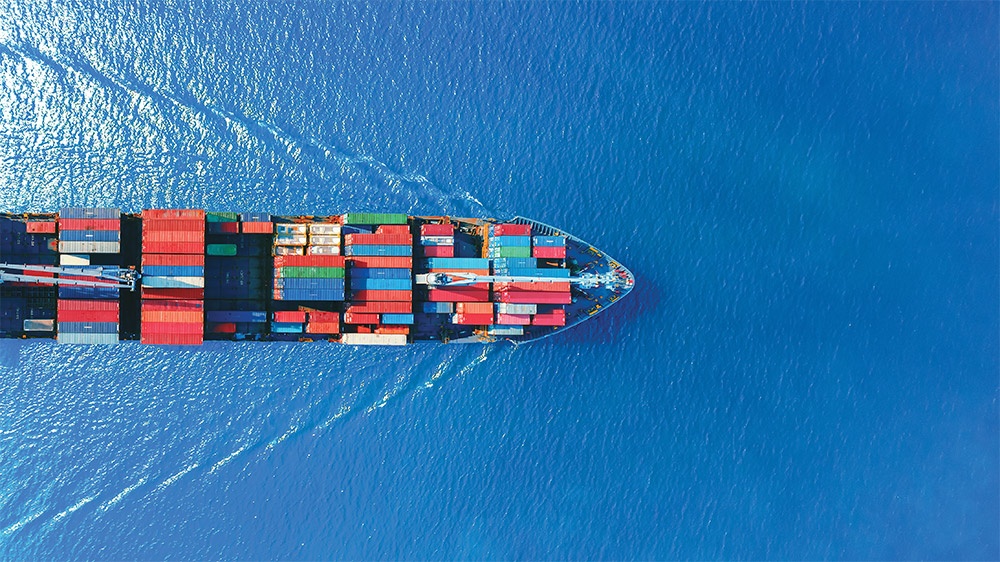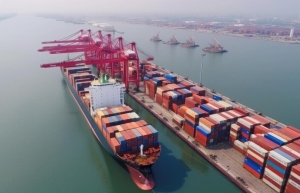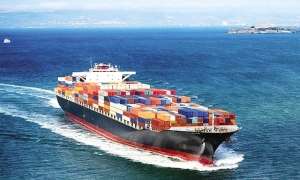Shipping dock squeezes inflicting domino effect
Sea freight congestion is spreading to Asia, with 60 per cent of ships waiting to dock in the region. In particular, Singapore’s container port, the world’s second-largest hub, is experiencing the worst congestion since the pandemic, with about 500,000 ships in queues.
 |
| Shipping dock squeezes inflicting domino effect, illustration photo/ Source: Shutterstock |
Tan Hua Joo, director of research company Linerlytica, said, “The waiting time to enter Singapore port used to be less than a day, but now the ships have to wait for a week. Waiting times at ports in Malaysia and China are also going up, especially at Shanghai and Qingdao ports. This is serious.”
Nguyen Hoang Hai, a representative of a shipping agent, said that it was very difficult to find ships overseas because of high freight prices, and a shortage of ships.
“A part of the reason is that ships are sailing towards China to export to the United States before August 1, to avoid being imposed anti-dumping duties by the US. So congestion at ports in Singapore and China has caused a shortage of ships in many places, pushing up freight rates,” Hai said.
International cargo shipping companies said that the annual peak shipping season had arrived earlier than expected, exacerbating congestion.
Niki Frank, managing director of DHL Global Forwarding’s Asia-Pacific branch, said that the early peak shipping season seemed to be driven by additional inventory replenishment, especially in the US. “Manufacturers and retailers may want to receive goods in their warehouses earlier than usual, as demand is expected to rise strongly,” he said.
Dang Dinh Long, CEO of Mega A Logistics Company, said that ships to Vietnam’s key export markets were finding things challenging, especially on the route to Europe with expensive fares and very few ships.
“Exporters that have a transport contract, will have ships, but freight rates are too high. Others with no transportation contracts, even accepting higher freight rates, have to wait a long time to be transported,” Long added.
Currently, the freight fares to Europe are about $8,200 per 40-foot container, doubling that at the end of 2023. Similarly, fares to other routes to the US, India, the Middle East, and South Asia also surged sharply. Besides this, freight rates to the new market of India increased more than three times in only eight months, from $1,000 to $3,500 per 40-foot container and from $700 to $2,500 per 20-foot container.
“Shipping lines remain free when only exporting to China, only collecting local fees, because they want more empty containers to serve Chinese exporters,” Long said.
Vietnamese enterprises mainly export in the free on board (FOB) method, and import in the cost, insurance, and freight (CIF) method. They pay attention to these shipping costs because their partners care about these. “However, currently, local exporters have been moving from FOB to CIF, and recent fluctuations in shipping rates have greatly affected businesses in the industry,” Long added.
For wooden furniture exporters, some previously negotiated contracts have also been interrupted, as customers wait for decreasing prices of freight fares and to find more effective solutions.
Nguyen Chanh Phuong, vice chairman of the Ho Chi Minh City Handicraft and Woodworking Association, said that the tense situation in the Red Sea has forced shipping lines to change their routes, leading to congestion at Singapore port and neighbouring ports in Southeast Asia.
The waiting time to pick up goods is three times longer than usual, causing a shortage of ships and containers waiting at the yard.
The US plans to impose 25-100 per cent tariffs on Chinese goods such as batteries, electric vehicles, and medical supplies from August, which has forced exporters to speed up delivery or booking ships at high prices. These also contribute to increasing shipping costs.
“Businesses are worried that shipping rates will rise much higher than during the pandemic,” Phuong said.
For most garment and textile enterprises, they have recovered with export orders landed until the end of the third quarter, or even until the end of the year. However, they are struggling with costs to ensure efficiency.
In the short term, experts predict that congestion in Asian ports will not ease, so container shipping rates may remain high until the third quarter of this year.
 | Shipping costs stifle progress among Vietnamese exporters Exporters are struggling with numerous challenges caused by high shipping costs, and are calling for the support of local state management authorities. |
 | Shipping costs continue to climb Rising logistics costs are eroding profits and forcing exporters to freeze orders, as well as revealing inadequacies in the management of foreign shipping companies operating in the waters of Vietnam. |
 | Shipping tickers prove lucrative Uptrend freight rates, high demand for freight transport, and falling fuel prices are likely to boost shipping firms’ profits in the second half of 2024, as well as creating appeal for this ticker group. |
What the stars mean:
★ Poor ★ ★ Promising ★★★ Good ★★★★ Very good ★★★★★ Exceptional
Related Contents
Latest News
More News
- Vietjet chairwoman awarded Labour Hero title (December 29, 2025 | 13:06)
- How to unlock ESG value through green innovation (December 29, 2025 | 10:03)
- AI reshapes media and advertising industry (December 29, 2025 | 08:33)
- FPT and GELEX sign deal to develop blockchain tech for global markets (December 29, 2025 | 08:29)
- Vietnam’s GDP forecast to grow by 9 per cent in 2026 (December 29, 2025 | 08:29)
- Women entrepreneurs are key to Vietnam’s economic growth (December 29, 2025 | 08:00)
- Vietnam's top 500 value-creating enterprises announced (December 27, 2025 | 08:00)
- The PAN Group shaping a better future with ESG strategy (December 26, 2025 | 09:00)
- Masan Consumer officially lists on HSX, marking the next phase of value creation (December 25, 2025 | 13:20)
- MCH to become the largest consumer stock on VN-Index (December 24, 2025 | 11:05)

 Tag:
Tag:



















 Mobile Version
Mobile Version